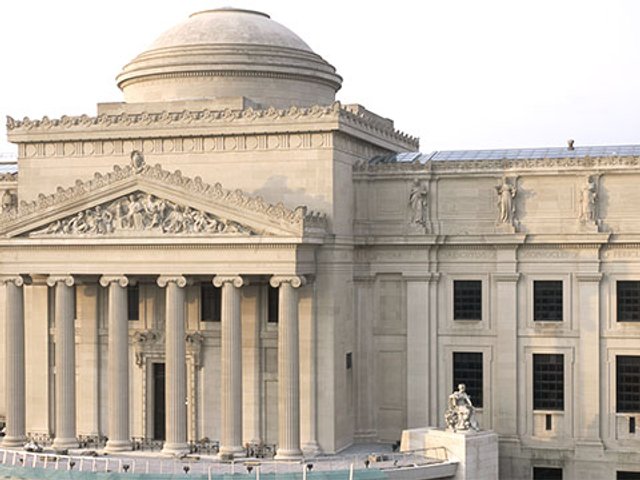A union filed a petition today with the US National Labor Relations Board seeking a vote for representation of full-time and part-time employees at the Brooklyn Museum, among them curators, conservators, educators and visitor services and retail workers. The move follows a wave of other organising efforts at New York art museums.
The labour entity, the Technical, Office and Professional Union Local 2110 of the far-flung United Auto Workers (UAW), is seeking to represent around 130 employees at the museum, says Maida Rosenstein, the president of the local. The union already represents workers at other art institutions including the Museum of Modern Art, the New-York Historical Society, the New Museum and the Bronx Museum of the Arts, and joined forces last week with employees of the Whitney Museum of American Art to similarly organise a bargaining unit. Earlier in May, workers at the Hispanic Society of America in New York also began an effort to organise with Local 2110.
Rosenstein says the petition includes some Brooklyn Museum employees that the institution classifies as temporary, including many of the workers in the museum’s shops and visitor services: “We think they should be eligible,” she says.
The next step, she adds, is for the museum to post a notice of the petition by next Tuesday. After that, Rosenstein says, the museum has three days to challenge elements of the petition, including whether some employees should be eligible for representation by the union.
In an emailed statement, the Brooklyn Museum said: “The Brooklyn Museum respects the rights of our employees to consider and evaluate union representation and is committed to a cooperative, fair and respectful process in order to achieve the best outcome for our staff.” It made no further comment.
Rosenstein says that the Covid-19 pandemic has heightened awareness among museum employees about how vulnerable they are, principally in terms of job protection. Last June, amid its contagion-related closure, the Brooklyn Museum laid off 26 full-time and three part-time employees, and Rosenstein says that an unspecified number were furloughed or put on reduced work weeks. “I think the pandemic has spurred people because without a union, they don’t have any protection in a crisis like that,” she says.
Akane Okoshi, a researcher in the museum's visitor experience and engagement department, agrees. “The pandemic made us acutely aware of the disparity between those who faced the greatest health risks in public-facing roles without health benefits, and those who held administrative positions with health benefits," she says.
While some US art institutions have fought unionisation, including the New Museum, where employees ultimately succeeded in forming a unit, others have been less oppositional, including the Massachusetts Museum of Contemporary Art in North Adams, Massachusetts, “which made clear from the get-go, we respect our workers’ right to decide”, Rosenstein says. “We hope Brooklyn will follow suit, but it’s not clear.”
“The Brooklyn Museum is one of the most progressive heritage institutions in the nation,” says Natalya Swanson, a conservation fellow at the museum, in a statement. “Without the staff, the museum wouldn’t be able to produce the great exhibitions and programming it’s known for. We believe that a union contract will help us negotiate terms that reflect our value and give us the protection we deserve.”



